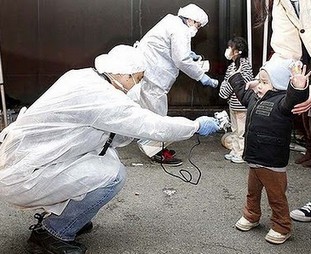The Debate: How to calculate, and engineer, for risks like this

Last week, somewhere between two and eight thousand people revived protests against a beachfront nuclear power station, scheduled to open over the next few weeks, in the southern Indian state of Tamil Nadu. The same area suffered vast destruction in the 2004 Boxing Day tsunami. Opponents of the project worry the facility is vulnerable to the same risks that led to last year’s Fukushima nuclear disaster. The protest shows some signs of spreading. Police arrested 250 opponents of the project who were traveling to the scene from a neighboring state, in one recent case .
Anti-nuke protests are old hat and even eight thousand people isn’t many in a province of millions. The protesters, however, stopped the project from proceeding once already, a year ago. Shortly after the Fukushima disaster, protesters who worried about a similar event in India formed a ring around the Tamil Nadu plant’s construction site, delaying its opening by a year.
The latest demonstrations are a response to a decision a few weeks ago. India’s nuclear regulatory agency gave the Russian-built plant’s operators the OK to start loading nuclear fuel into one of two reactors, the final stage before bringing the plant on-line. That provoked opponents to gather on a beach and to wade into the water around the plant. Police broke up the demonstration with teargas, resulting in chaos, several injuries and one death, according to reports like this one.
The open question is whether it’s possible to engineer against a Fukushima-like event at all — and if so, whether the operators of this specific project can do so. Writing thoughtfully a few days ago in The Hindu, Rahul Siddarthan, of the Institute of Mathematical Sciences in Chennai, sounded annoyed by the shadow of Fukushima:
India’s scientific academies may prefer to be silent on most issues of importance, but individual Indian scientists are an outspoken lot — they have contributed to the public debate on a variety of issues, ranging from nuclear weapons in the late 1990s to genetically modified crops more recently. If there were a genuine debate to be had on the safety or desirability of nuclear power, I would expect Indian scientists to actively participate in it. And in fact there is a genuine debate to be had, but it is not an abstract debate about the safety or desirability of nuclear power. It is a concrete debate about the mechanisms for ensuring safety and transparency.
The Indian plant falls unusually well into both debates, because of a double-whammy of spooky parallels. Besides its beachfront location — like Fukushima and some long-controversial California facilities — it’s also located in one of the areas hardest hit by the horrific 2004 Indian Ocean tsunami. So you’re talking about a community that looks at its shorefront, and sees elements of two of the most unnerving human events in recent memory. Too, a few weeks ago, Japan’s government announced it will phase out nuclear power by 2030 (2040 by some accounts). That gives the impression that coastal nuclear power is a problem to avoid, or at least not discuss, rather than hope to engineer away.
Electricity-strapped India is betting the other direction. Demand for power is spiking as the country develops, and New Delhi has announced plans to build 30 new reactors in the next 25 years. Right now, India gets nearly two-thirds of its energy from coal.
A useful summary of the Tamil Nadu debate, from Dawn.com, is here.



